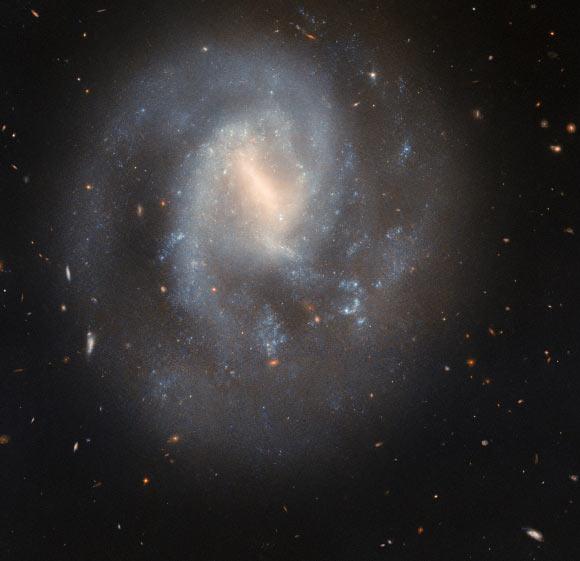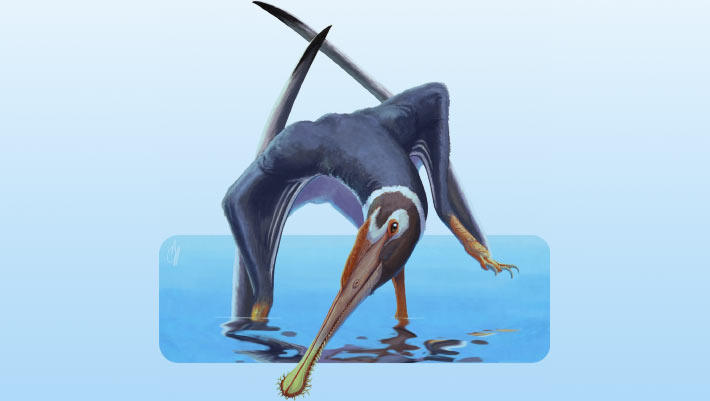Diamantinasaurus matildae, a species of sauropod dinosaur that lived around 94 million years ago (mid-Cretaceous period), ate conifers, seed ferns, and flowering plants, and relied almost entirely on its gut microbes for digestion, according to an analysis of a specimen from the Winton Formation of Queensland, Australia.
Knowledge of the diet of dinosaurs is critical to understanding their paleobiology and role in Mesozoic ecosystems.
However, although many non-avian dinosaurs have been interpreted as herbivorous on the basis of their anatomy, very few fossils provide empirical evidence for this in the form of cololites (fossilized gut contents).
To date, of the thousands of herbivorous non-avian dinosaur specimens described globally, only three are regarded to preserve unequivocal or very probable gut contents, and all are armored thyreophoran dinosaurs preserved in marine layers.
The only other herbivorous non-avian dinosaur specimen with probable fossilized gut contents is a hadrosaurid ornithopod dinosaur preserved in a fluvial setting.
Thus, gut contents for sauropod dinosaurs — perhaps the most ecologically impactful terrestrial herbivores worldwide throughout much of the Jurassic and Cretaceous, given their gigantic sizes — have remained elusive.
“Ever since the 19th century, paleontologists have firmly regarded sauropods as herbivores,” said Dr. Stephen Poropat, deputy director of the Western Australian Organic and Isotope Geochemistry Centre at Curtin University.
“However, the specific plants that they ate, and the height above ground at which they fed, have remained unknown — until now.”
Dr. Poropat and colleagues analyzed the fossilized gut contents of a Diamantinasaurus matildae specimen nicknamed Judy.
The fossil was discovered on a property near Winton and excavated in 2017 by staff and citizen scientists from the Australian Age of Dinosaurs Museum of Natural History.
Within Judy’s stomach contents, the paleontologists found pinnules and bracts from tall conifer trees, along with leaves and fruiting bodies from smaller seed ferns and flowering plants.
Diamantinasaurus matildae skeleton with gut contents. Image credit: Poropat et al., doi: 10.1016/j.cub.2025.04.053.
“The findings revealed that sauropods ate a variety of plants from various heights above the ground, and that this contributed to their long-term success,” Dr. Poropat said.
“The stomach contents we found belonged to a 12-m-long, subadult sauropod.”
“Our findings show that at least some species of subadult sauropods were able to feed at a variety of heights above ground and easily adapt to the various climatic, environmental, and vegetation changes throughout the Jurassic and Cretaceous periods.”
“We also confirmed that sauropods were bulk-feeders — a method still used by herbivorous reptiles and birds today.”
“This means they would not have chewed their food, instead swallowing it whole and letting their digestive system do the rest of the work.”
“Any given meal would likely have resided in their digestive tract for up to two weeks before waste from that meal was excreted.”
“Finally being able to look inside the first reported sauropod stomach contents had confirmed previous hypotheses about the sauropod species.”
“Sauropods were remarkable animals that roamed the earth for more than 130 million years. Understanding their diet is critical to understanding their impact on Earth’s ecosystems — particularly on plants and other herbivorous species — throughout that time.”
“Further research and ideally finding more sauropod fossils with stomach contents will be needed to determine whether their feeding habits changed as they matured, and particularly whether they continued to eat low-growing plants, which they fed on as juveniles, throughout their adult lives.”
“It was the first time biomarkers and molecules have been identified in the gut contents of a sauropod,” said Professor Kliti Grice, Founding Director of the Western Australian Organic and Isotope Geochemistry Centre at Curtin University.
“By using advanced organic geochemical techniques, we were able to confirm the presence of both angiosperms and gymnosperms in the diet of this sauropod.”
“This unique approach was what provided molecular evidence of the plants that sauropods consumed.”
The team’s paper was published in the journal Current Biology.
_____
Stephen F. Poropat et al. 2025. Fossilized gut contents elucidate the feeding habits of sauropod dinosaurs. Current Biology 35 (11): 2597-2613; doi: 10.1016/j.cub.2025.04.053


























